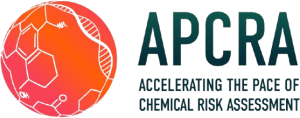Assessing Quantitative Concordance Between Human and Rodent Toxicity Data
Case Study Leader: US EPA (Chelsea Weitekamp)
Overall goal/objectives: Traditional toxicity testing for environmental chemicals follows the preclinical model of drug safety testing, resting on the assumption that rodents serve as sufficient predictors of adverse health effects that may occur in humans. However, drug development suffers from high attrition rates, in large part due to observations of unexpected toxicity in early phase…
The Landscape of Exposure NAMs and their Evaluation with Traditional Exposure Data
Case Study Leader: US EPA (Kristin Isaacs)
Overall goal/objectives: There is a need for high-throughput new approach methods (NAMs) for exposure, as data critical to exposure estimation are often limited. The NAM approaches include structure-based machine-learning Quantitative Structure Use Relationship (QSUR) models, non-targeted monitoring of environmental data, high throughput toxicokinetics, rapidly parameterized consumer exposure models, and consensus multi-pathway modeling (CPDat/SHEDS-HT) approaches (e.g.,…
Prospective Case Study to assess chemicals, using and developing New Approach Methodologies (NAM)
Case Study Leader: European Chemicals Agency (Tomasz Sobanski)
Overall goal/objectives: There are industrial chemicals that are produced in large volumes worldwide with limited information for hazard and safety by standard guideline methods. This project aims to leverage our resources in an international context to address these substances, while developing a NAM based approach that would be used and verified for prioritisation and that…
Transcriptomic analysis of human primary hepatocyte spheroids: Applications for read-across and additivity in risk assessment of emerging perfluorinated alkylated substances (PFAS) and PFAS mixtures
Case Study Leader: Health Canada (Ivy Moffat)
Overall goal/objectives: Per- and polyfluoroalkyl substances (PFAS) are a diverse class of organic chemicals used for various commercial, industrial, and residential applications. These stable chemicals resist degradation, allowing them to accumulate within the environment, posing a potential risk to humans and animals. However, with over 4,000 PFAS in the environment, there is a lack of…
High Throughput Toxicokinetics for In Vitro-In Vivo Extrapolation
Case Study Leader: US EPA (John Wambaugh)
Overall goal/objectives: New approach methodologies (NAMs) for toxicology have resulted in the availability of in vitro bioactivity data across multiple pathways and endpoints for chemicals that often have no other data. HTTK allows for in vitro-in vivo extrapolation (IVIVE) so that bioactivity data (such as µM concentrations) can be placed in a human exposure context…
Use of NAMs for assessing the immunotoxic potential of PFASs
Case Study Leader: EFSA (Jose Tarazona/Luisa Ramos Bordajandi)
Overall goal/objectives: The available information has evidenced immunosuppression effects following PFASs exposure, in particular the reduction in the vaccination efficacy and possible increase in the susceptibility to infectious diseases; however the information is insufficient for a comprehensive risk assessment. The aim of the case study is to define and implement a NAM-based IATA protocol for…
Classifier for endocrine ER/AR activity screening
Case Study Leader: JRC (Effrosyni Katsanou, Stavroula Sampani)
Overall goal/objectives: Designing classifiers for use in different regulatory contexts that indicate a level of concern for the potential of a chemical to cause endocrine disruption in humans Case Study Leader: JRC (Effrosyni Katsanou, Stavroula Sampani) Collaborators: JRC, Health Canada, US EPA Status: In progress Presentations or publications that have been publicly released:
Incorporation of NAMs into species sensitivity distributions for ecological risk assessment – an evaluation
Case Study Leader: ECCC (Rebecca Dalton), US EPA (Dan Villeneuve)
Overall goal/objectives: The aim of the present case study is to evaluate the benefits and impact of incorporating NAMs-based vertebrate data into the derivation of species sensitivity distributions (SSDs). Species sensitivity distributions represent a probabilistic distribution of the measured sensitivities of different species of organisms to a given substance. They are generally used to identify…
